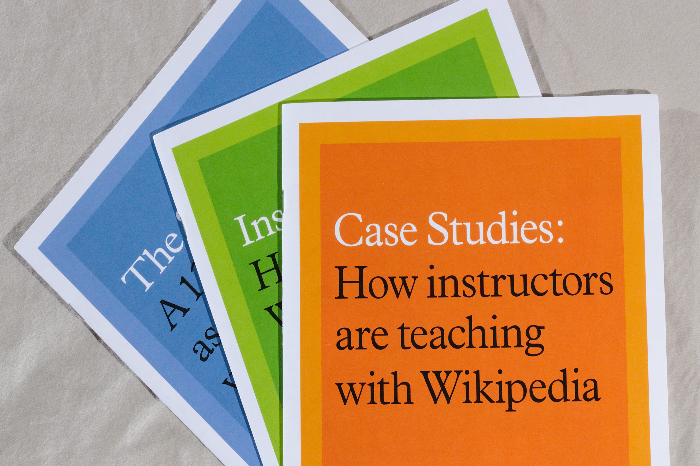5 Ways to Create SEO-Friendly Content While Addressing User Intent
Gone are those days when you could put up search engine optimized content on your website and expect it to rank higher in the search results. SEO maybe still a thing, but in the past few years, a lot has changed in the field of web content.
Search engines like Google are getting smarter with each passing day, and as we proceed towards the age of automation, filling your pages with mindless keywords will no longer help you feature in the first few SERPs (Search Engine Results Pages).
Google recently revealed that their latest search ranking depends heavily on the keyword intent. In fact, the latest updates made in Google algorithms focus primarily on identifying the intent behind a particular search to offer richer user experience.
So, when you are composing content for the internet, whether it’s for a blog or plain and simple product description, you need to keep the users in mind while optimizing it for the search engines.
Sadly, most content writers believe that it is hard to prepare SEO-friendly content that appeals to the audience. But that should not be the case. The primary objective of search engine optimization is to prioritize content that was helpful to the users, and it has always been that way.
If you are finding it challenging to prepare content that serves the user’s intent while complying with the search engine requirements, then these following tips may be of some assistance to you.
Acknowledge user’s intent:
As mentioned earlier in the post, search engines like Google are improving their operations to offer richer user experience, which is the reason why they are focusing more on the elements like the user’s intent behind the particular search. If you want your website’s content to feature in the front of the SERP, you will require acknowledging the user’s intent.
At first, you need to understand what “user intent” means. It is the objective of your audience which they desire to achieve when they put some keywords, phrase or query into the search engine. Understanding the user intent allows you to prepare content that addresses the concern of the user more accurately.
For instance, if a user enters the keyword “best laptops under $450”, it describes his intention for buying a laptop. Similarly, if the user enters the keyword “do my assignments”, it shows that he/she is willing to hire an assignment writer online. So always prepare your content in such a way that it addresses the user intent.
To find what the user intent is, you may need to identify the different stages of a buyer’s journey. Well, that’s another thing that you need to consider while creating a piece of content.
Identify the stages of buyer’s journey:
Well, if you don’t run a business, don’t be alarmed. In this particular case, the term “buyer” describes anyone who is a potential consumer of your website content. You may already be aware of the fact that you need to understand the needs of your audience before you can write for them. And to do that with precision, you need to identify the buyers’ journey and its different stages.
As discussed in the previous point, user intent depends a lot on which stage the buyer is currently is. Practically, there are three stages of a buyer’s journey, and you will have to identify each of them distinctively to prepare a user-friendly content.
The first stage is the “awareness” stage, where the buyer or the audience identifies the challenges or opportunities. In the “consideration” stage, which is second in the line, the buyer usually has a clearly defined objective or obstacle, which he tries to evaluate with different approaches to pursue the objective or overcome the obstacle.
In the last and final stage, the “decision” stage, the buyer has already chosen an approach to pursue his goal or to overcome the obstacle and try to find the best offering to meet his needs. A blog in the Hubspot website carefully describes how you can get the necessary information about these different stages by asking several questions.
Addressing the user intent becomes a lot easier when you know where the user is in his buyer’s journey. However, you also need to optimize the content as per the search engine requirements for better results, and keyword research plays a crucial role in that.
Do keyword research:
Whether it is the matter of user intent or the subject of search engine optimization, keywords play a crucial role in both fronts. It can be used to identify the search intent of the users, and simultaneously it can also function as the focus of the content that you are drafting.
It will be wiser for you to conduct keyword research before you start composing the content. Professional content marketers always do that to find out which keyword is most frequently used by the audience they are serving. Tools like Google Keyword planner are quite useful in finding the right set of keywords.
However, finding the right keywords isn’t enough to create SEO-friendly content. You need to be little clever with the placement of the keywords in the content. This is the part that creates challenges for the SEO copywriters. You cannot just randomly use the keywords and expect better search rankings on the internet.
As mentioned earlier, the latest Google algorithm prioritizes the user intent while ranking a page. So, you need to be mindful while using the keywords in the content. It needs to make sense. If the keyword density goes higher than 4 percent, it may be detected as spam.
There are several things that you need to understand while using keywords in the content. Firstly, find the long tail keywords, which are used commonly in your industry. Maintain their density around 1 percent in the content. You can use the primary keyword in the title, the first 100 words of the content, its meta description, the first headline of the content, and in between the content, maintaining the density of 2.5-3 percent.
Add humor to the content:
Optimizing the content for search engines as well as the users may provide you with a certain level of traffic. But in order to improve your chances of getting more visitors to your website, you may need to make the content rather interesting for the user.
You need to understand that there are several other websites on the internet that offers the same kind of information for the particular keyword search. In order to drive more number of visitors to your website, you need to be innovative with the presentation of the content.
Presenting your content in a humorous tone may be the key to more traffic. You may have seen the “BuzzFeed” articles. They may use a lot of clickbait headlines, but they do publish some interesting content. You don’t necessarily need to follow their style of writing, but you can certainly learn how they do it.
Google may be smart, but it still doesn’t know how to measure humor or other factors that excite users. So you will still have to rely on the SEO and search intent to rank higher in the SERPs, but to make it more appealing to your users, your aim should be to make the content more enjoyable for the readers.
Use case studies to engage users:
Neil Patel, a renowned SEO expert, suggests that case study is one of the most effective forms of content that allow a website drive more traffic. He believes that the research-based content like case study creates more impact on the audience, especially in the case of business-to-business buyers.
Just ask yourself – if you were a user, would you choose a website that offers general information or the one which offers in-depth details with proper evidence and statistics? Of course, the second one. So you perhaps using a case study of the brand you are working for or something that you have experienced yourself can be great content for maximum audience engagement.
Everyone likes good stories. Be it in the form of a case study or a story that describes your journey and the challenges you have encountered – if you are able to connect with your audience, it will certainly drive more traffic to your content. People often get inspired by such writings. And even though you may require search engine optimization, offering such form of content often help improve your readership, if it’s presented properly.
You need to understand the fact that people come first. Your website, the content you publish in it and the services you want to market using the content – everything is for the people. So you cannot expect to attain success from the content if that does very little to serve the people.
As mentioned previously, SEO should be used to complement user intent, not to complicate the content for the users. With the help of these aforementioned tips, it may be easier for you to draft content for the users while ensuring search engine requirements. Remember, you cannot expect one to work without the presence of other. It will be beneficial for your website if you can produce content that addresses the user intent while fulfilling the search engine requirements with conviction.
About the Author:








